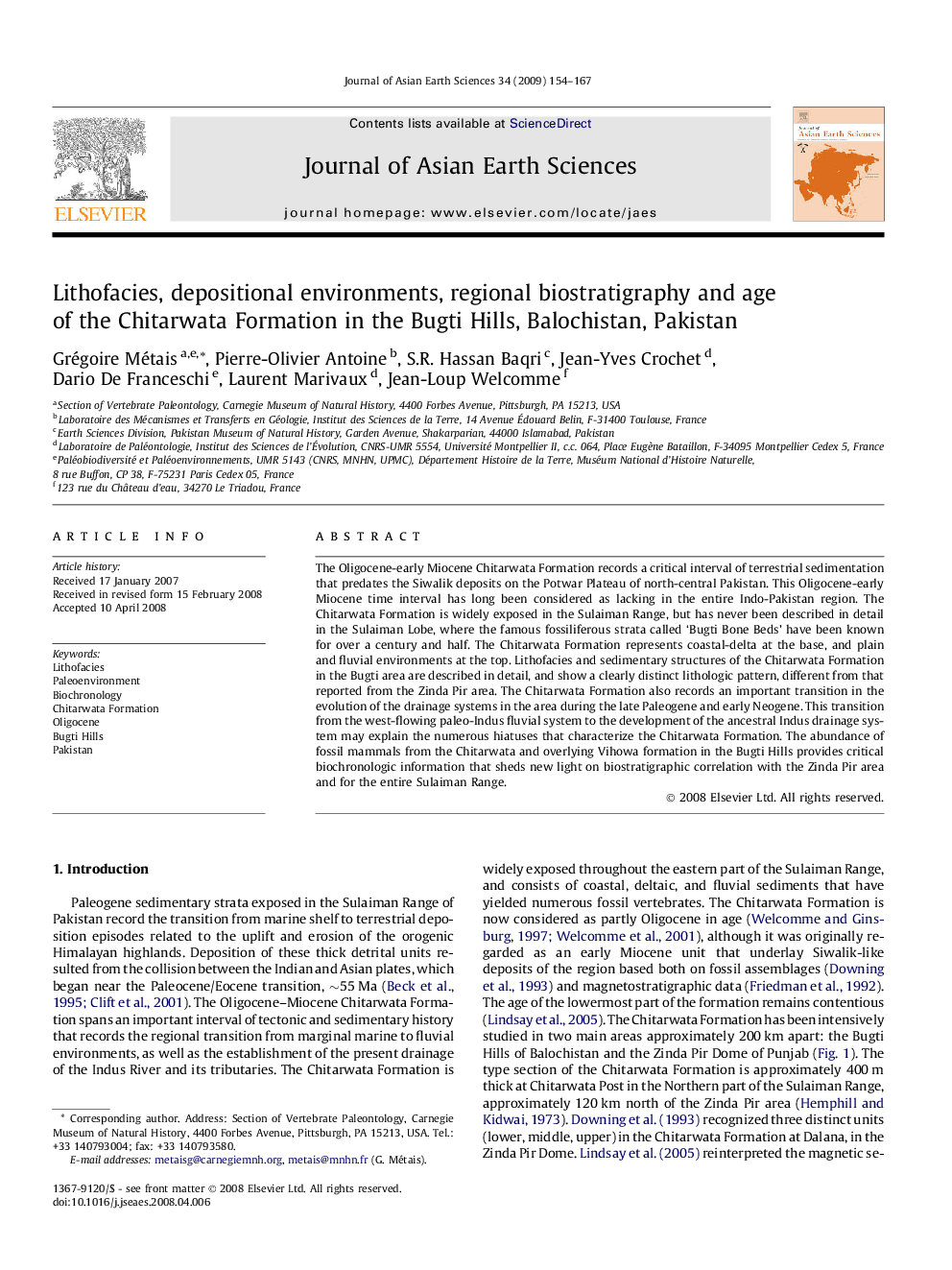| Article ID | Journal | Published Year | Pages | File Type |
|---|---|---|---|---|
| 4732278 | Journal of Asian Earth Sciences | 2009 | 14 Pages |
Abstract
The Oligocene-early Miocene Chitarwata Formation records a critical interval of terrestrial sedimentation that predates the Siwalik deposits on the Potwar Plateau of north-central Pakistan. This Oligocene-early Miocene time interval has long been considered as lacking in the entire Indo-Pakistan region. The Chitarwata Formation is widely exposed in the Sulaiman Range, but has never been described in detail in the Sulaiman Lobe, where the famous fossiliferous strata called 'Bugti Bone Beds' have been known for over a century and half. The Chitarwata Formation represents coastal-delta at the base, and plain and fluvial environments at the top. Lithofacies and sedimentary structures of the Chitarwata Formation in the Bugti area are described in detail, and show a clearly distinct lithologic pattern, different from that reported from the Zinda Pir area. The Chitarwata Formation also records an important transition in the evolution of the drainage systems in the area during the late Paleogene and early Neogene. This transition from the west-flowing paleo-Indus fluvial system to the development of the ancestral Indus drainage system may explain the numerous hiatuses that characterize the Chitarwata Formation. The abundance of fossil mammals from the Chitarwata and overlying Vihowa formation in the Bugti Hills provides critical biochronologic information that sheds new light on biostratigraphic correlation with the Zinda Pir area and for the entire Sulaiman Range.
Related Topics
Physical Sciences and Engineering
Earth and Planetary Sciences
Geology
Authors
Grégoire Métais, Pierre-Olivier Antoine, S.R. Hassan Baqri, Jean-Yves Crochet, Dario De Franceschi, Laurent Marivaux, Jean-Loup Welcomme,
